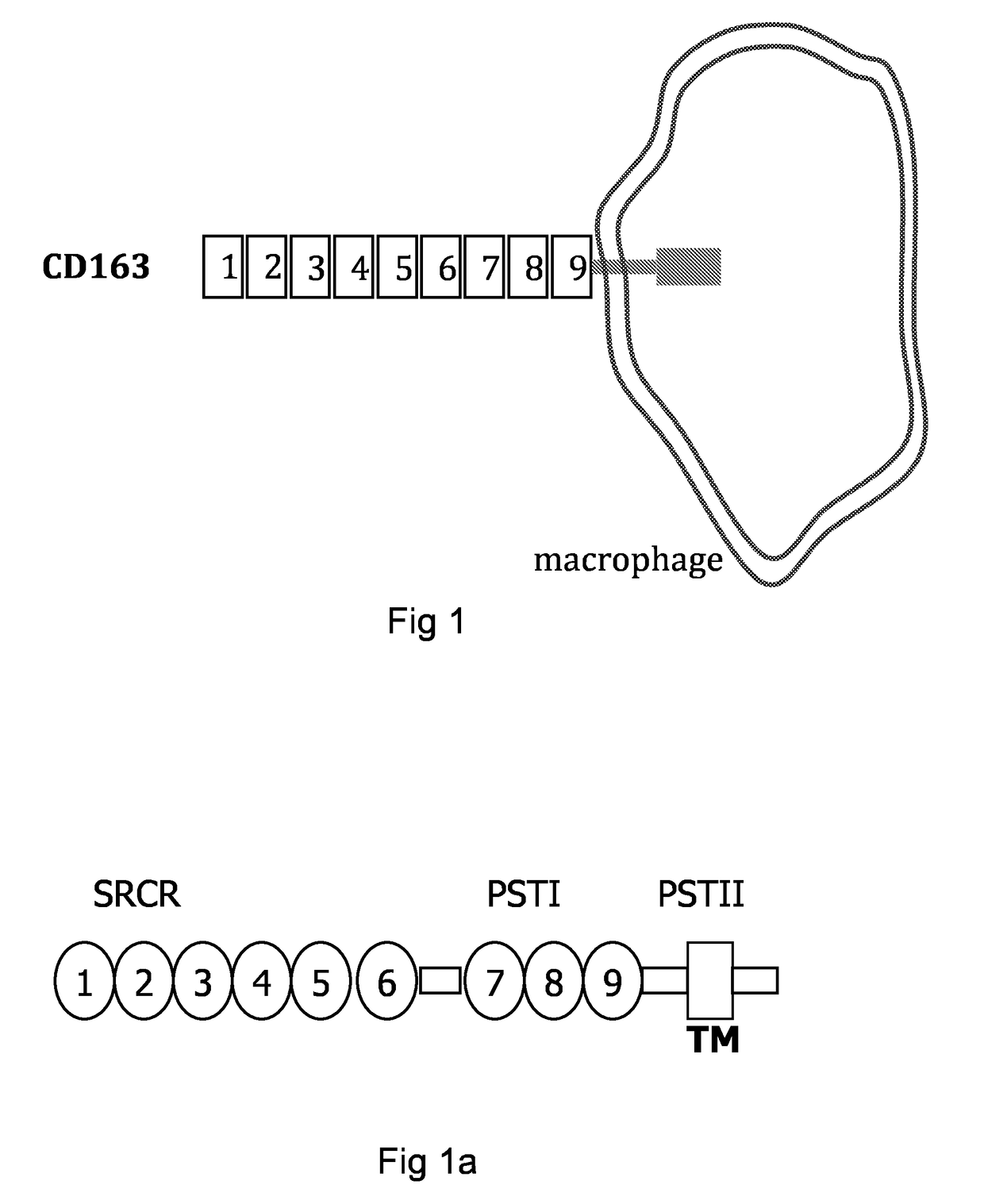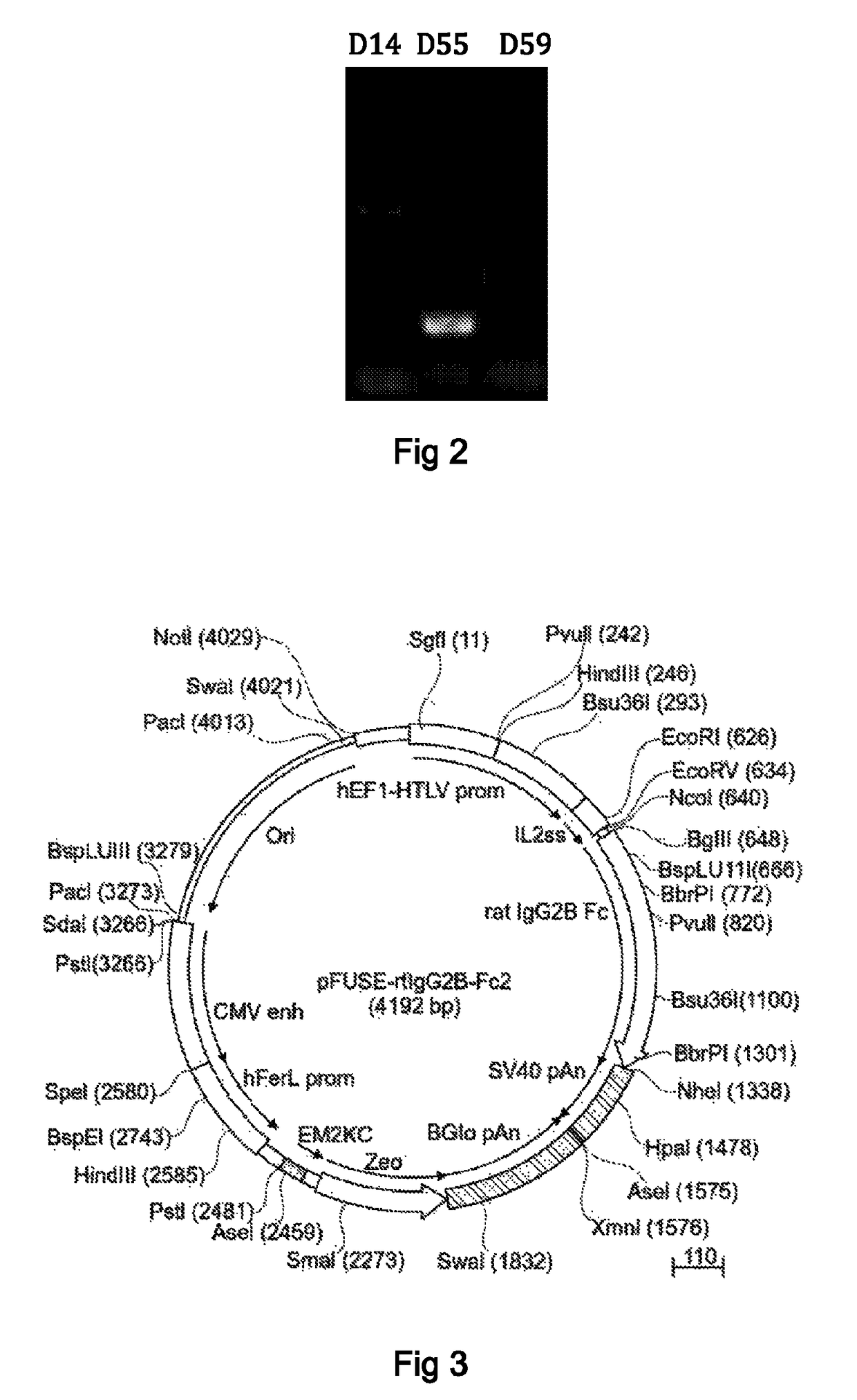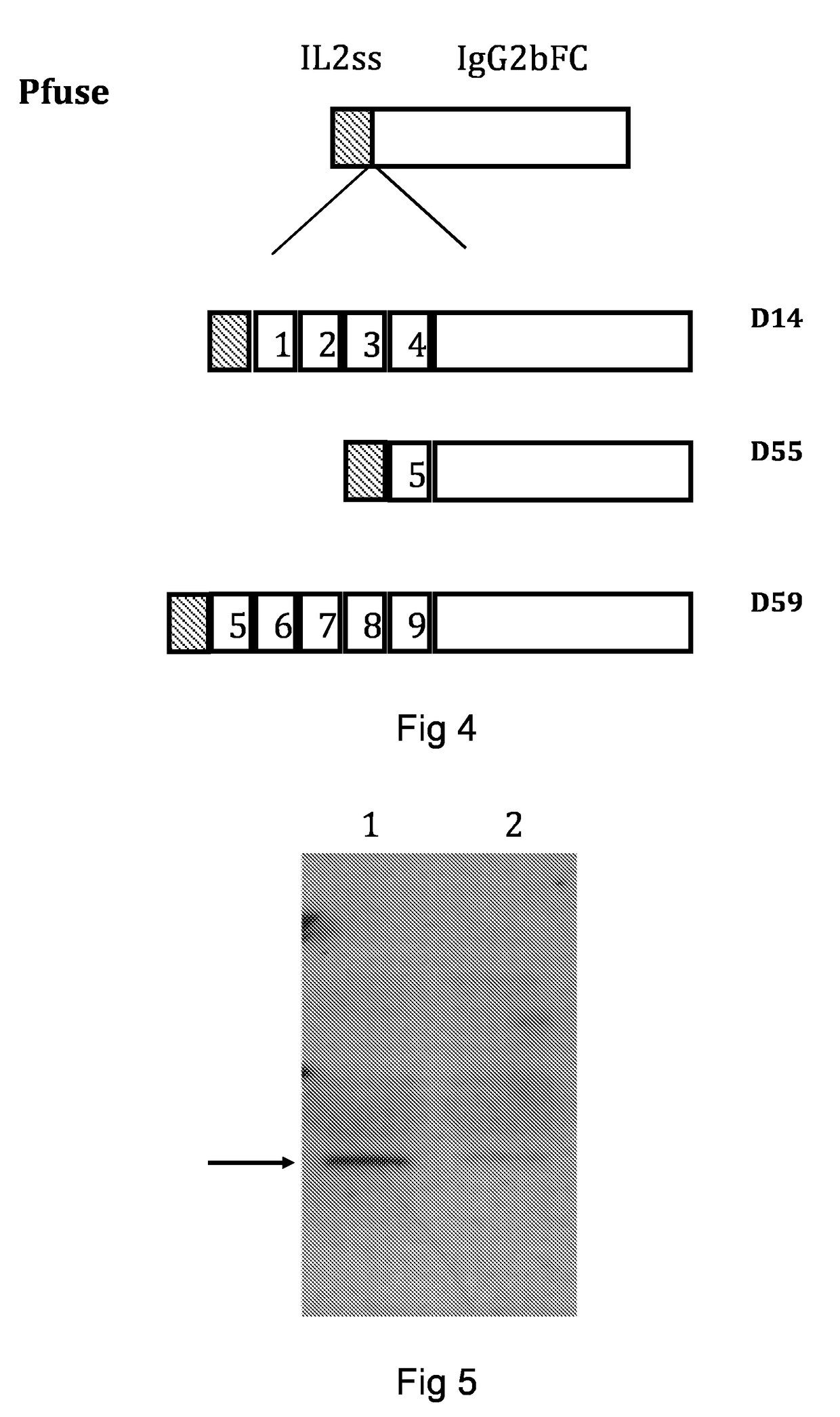Domain 5 of CD163 for use in antiviral compositions against PRRS, and transgenic animals
a technology of cd163 and antiviral composition, which is applied in the direction of viruses/bacteriophages, peptides, peptides/protein ingredients, etc., can solve the problem of inactiveness of this gene, and achieve the effect of rapid but transient expression of the nucleas
- Summary
- Abstract
- Description
- Claims
- Application Information
AI Technical Summary
Benefits of technology
Problems solved by technology
Method used
Image
Examples
example 1
Production and Testing of Decoy CD163 Fragments
[0187]1—RTPCR of Porcine CD163 SRCR Domains
[0188]To generate cDNA fragment that encodes domain of the scavenger receptor CD163 (FIG. 1 and FIG. 1a) we have used the published sequence GeneBank accession # ABV80230. Tables 1 and 2 show the primer sequences and their combination that were employed for the reverse transcriptase and PCR stages. Domains of cD163 were cloned using RNA prepared from porcine alveolar macrophage isolated from lung macrophage of a Large White breed #131 (Ait-Ali et al. 2007). Reverse transcriptase and PCR were performed as described elsewhere (Ait-Ali et al. 2007) and the result is shown in FIG. 2.
[0189]
TABLE 1PrimersSequenceD1-FWACGAATTCCAGAATGGTGCTACATGAAAACTCTGG(SEQ ID NO 8)D5-FWTCGATATCACACAGGAAACCCAGGCTGGTTGGAGG(SEQ ID NO 9)D4-RVGCCGATATCGCTGAGCAGGTAATTTTGGCTTCGTC(SEQ ID NO 10)D5-RVTAACCATGGTGTATCTTGAGCAGACTACGCCGACG(SEQ ID NO 11)D9-RVCCGATATCGAGCACGTCACAGCAGCATCCTCCTTG(SEQ ID NO 12)
[0190]
TABLE 2Size Forward...
example 2
of a Pig Over-Expressing Domain 5 Using a Lentiviral Vector
[0204]Lentiviral vectors are produced by co-transfection of HEK293T cells with 3 plasmids; the first encodes a chosen promoter (this could be ubiquitous, e.g. the CAG promoter, tissue restricted, e.g. the CMV immediate early promoter which is known to be expressed predominantly in exocrine cells, or tissue specific, e.g. CSF1 receptor promoter which is specific to cells of the mononuclear macrophage lineage or a synthetic liver specific promoter) directing expression of a transgene comprised of exon7 (domain 5) fused to a secretory signal peptide such as that from IL-2. This promoter-exon 7 combination is flanked by HIV1 regulatory sequence elements and inverted terminal repeats. The second plasmid encodes HIV1 Gag and PoI elements, such as those encoded by plasmid psPAX2. The third plasmid encodes a version of the vesicular stomatitis virus G protein that is commonly used to pseudotype lentiviral particles due to its broad ...
example 3
of a Pig Overexpressing Domain 5 Using DNA Editor-Mediated Targeting
[0207]DNA editors (TALENS, ZFNs or CRISPRs) to a target site in the porcine genome can be constructed through known techniques.
[0208]This could, for example, be the porcine ROSA26 locus or a similar locus where robust gene expression is anticipated (see, for example, CN102851279 for details of a pig ROSA26 locus).
[0209]A DNA molecule comprised of a promoter directing expression of exon7 (domain 5) fused to a secretory signal peptide as detailed above, flanked by sequence of 30-2000 bp immediately upstream and downstream of the DNA editor target site in the porcine genome can be designed and constructed using known techniques (henceforth referred to as the targeting construct).
[0210]Porcine zygotes produced as above will be injected into either the cytoplasm or a pronucleus with a solution comprising the targeting construct together with the DNA editor supplied in either DNA, RNA or protein form. Injected zygotes wil...
PUM
| Property | Measurement | Unit |
|---|---|---|
| resistance | aaaaa | aaaaa |
| macrophage cell surface markers | aaaaa | aaaaa |
| width | aaaaa | aaaaa |
Abstract
Description
Claims
Application Information
 Login to View More
Login to View More - R&D
- Intellectual Property
- Life Sciences
- Materials
- Tech Scout
- Unparalleled Data Quality
- Higher Quality Content
- 60% Fewer Hallucinations
Browse by: Latest US Patents, China's latest patents, Technical Efficacy Thesaurus, Application Domain, Technology Topic, Popular Technical Reports.
© 2025 PatSnap. All rights reserved.Legal|Privacy policy|Modern Slavery Act Transparency Statement|Sitemap|About US| Contact US: help@patsnap.com



